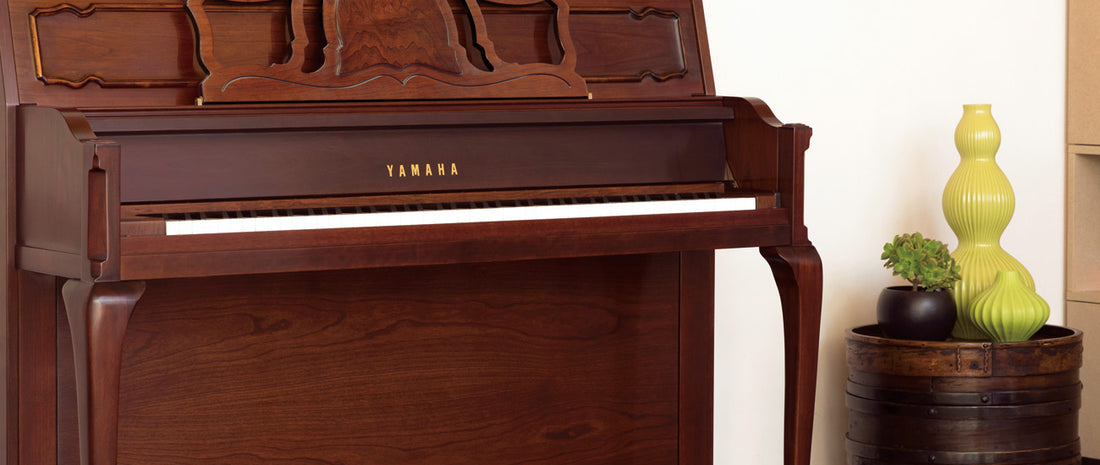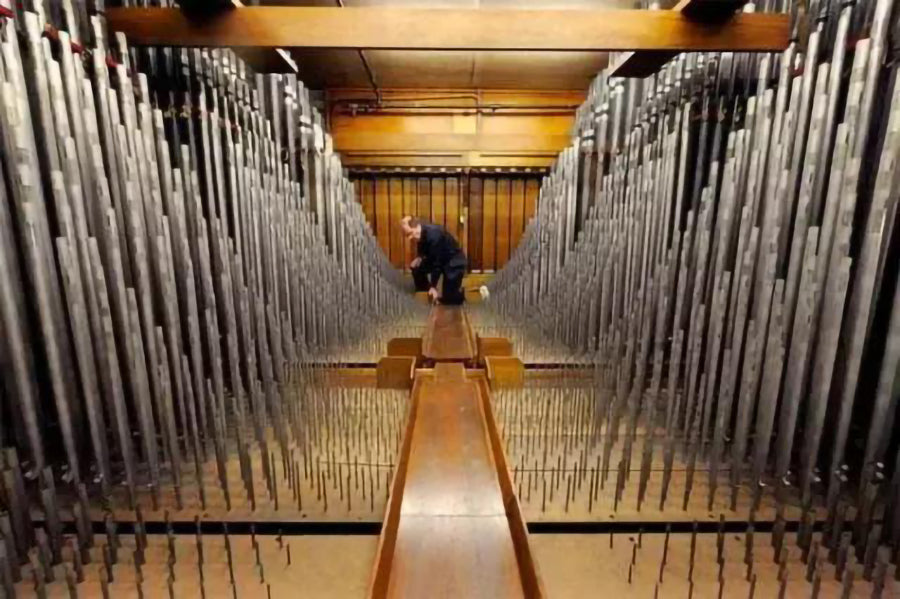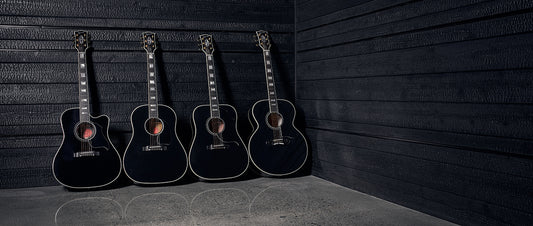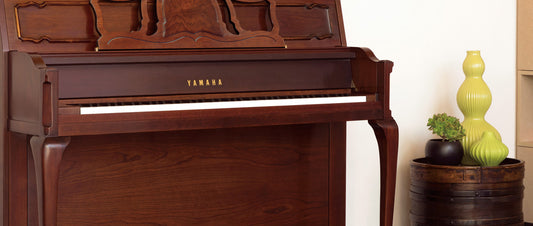


What is it about music that’s so powerful? A similar question has crossed everyone’s mind at one time or another. Its attraction is unrelenting and accompanies us our whole life long. It can be powerful and rousing as a roaring freight train, or soft and comforting as a lullaby.
As a matter of point- what is music, beyond its basic definition? One thing we know for sure is that music is every bit as old as we are. Science tells us our earliest ancestors created music, alongside everything else needed to survive and prosper.
Music is not unique to any one people, civilization, culture, religion, group or individual. Somehow music connects with the human experience from the foundation up. Music has always played an important part of social life on large and smaller scales- Victory celebrations, Holidays, coronations, anthems of national pride to local gatherings like marriages, chiming bells reporting the time of day-even the diner bell and let’s not forget the theme music announcing its time for Monday Night football.
Most of all, music has a way of uniting people, and finding each other, like a type of “social divining rod.” Music is a mood amplifier, that’s deeply connected with memory, expressiveness, and creativity that bonds people together. Science suggests the basic family unit was born of music’s power to unite. Of all things shared by the people of the world, music is probably the most powerful element and most universal form of communication for the past 40,000 years.
Music is much more than an irresistible and sometimes overwhelming sensory delight. It’s a common denominator that partly defines “what it is to be human.”

Torakusu Yamaha, Founder of Yamaha
What does music mean to you?
It’s an absolute truth that music plays an enormous role in the lives of the masses, and on a personal level to the individual. It’s also true that some people “resonate” with life’s soundtrack more than others, but even if you don’t yet play a musical instrument, chances are you are among the majority that can feel as well as hear music. You don’t need to be another J.S Bach, Louis Armstrong, Maybell Carter, Looker, or Keef Richards, to want to create music. Music is for everyone, and never has it been more possible for the average person to follow their musical instincts than during and after the industrial age. Sometimes it takes people with vision to see and hear the importance and potential of what might otherwise seem obvious. One such visionary was Torakusu Yamaha. Although “Torakusu” is not the most common western name, you’ll have a tough time finding someone who does not recognize the name “Yamaha” today. The contributions made by the company founded by Torakusu Yamaha, probably put the power of music in the hands of more people around the globe, than any other entity in the world, by a strong margin.

The incredible life and legacy of Torakusu Yamaha
(1851) THE BIRTH OF THE SAMURAI’S SON, IN CHANGING TIMES
Being a son of a Samurai meant Torakusu’s family had the means and status to provide an advanced education for the gifted young man. Yamaha studied business and engineering, augmenting the abilities and skills of the natural born problem solver.
Torakusu Yamaha comes from the first generation of Japanese children to be born in the final years of “old Japan” and come of age during the growth of “new Japan.” Hundreds of years of self-imposed isolationism meant Japanese life changed little for the past few centuries. The incoming tidal wave of Western trade and influence was about to thrust Japan a thousand years forward, landing right in the heart of the modern industrial age. Torakusu Yamaha grew up steeped in Eastern tradition, but captivated with Western Science, Engineering, Culture, Business, fashion, and eventually-even the strange sounding music of the West.
TORAKUSU YAMAHA, THE WATCH MAKER
One of the first elements of Western culture to captivate the Japanese people was the pocket watch. It’s a mixture of craftmanship, practical purpose, status, and fashion. Yamaha applied his formidable engineering skills, craftsmanship and business sense to open shop making and servicing watches. Watchmaking is a delicate and arduous craft that takes great deal of great applied technical skills-something young Yamaha had in spades.
By 43 years of age, the watchmaker built a reputation as an outstanding craftsmen, and one of Japan’s leading engineers of the new western tech. As western machinery became more commonplace in Japanese life, It was common for Yamaha to find himself repairing and maintaining devices he’d never seen before.
While repairing medical equipment at the Hospital in Hamamatsu, the enterprising son of a Samurai took a job at the local school in Hamamatsu, to perform a repair on something completely different than anything he’d ever encountered.

Yamaha Reed Organ built in 1900
(1886) TORAKUSU YAMAHAS JOURNEY
Yamaha was profoundly intrigued when presented with an air powered reed organ- a main attraction of the School and of Hamamatsu. Despite never having seen or heard such thing, Yamaha was the most likely candidate (aside from a trained western specialist) to repair such a complex musical instrument. In the late 1800’s, the reed organ was a relatively new instrument, even in the Western world. The reed organ design is a smaller version of the Traditional, famous (and massive) Pipe Organ. Most pipe organs are so large, they were custom designed to fit inside the architecture of the location the Organ will reside in.
Even smaller pipe organs could have hundreds of pipes, some of them at least 8 feet long. Larger Organs boasted pipes with a massive 32-foot length, or longer.
If you’ve ever heard one of the worlds remaining giant pipe organs played live, it’s unlikely you will ever forget the bone jarring experience. It’s no wonder the pipe organ played a significant role in religious services held inside Churches and the great Cathedrals of Europe and the Americas. The sound it produces is positively almighty.
Yamaha was successful in his job of repairing the school’s reed organ. With the aid of a helper, Yamaha stripped down, and rebuilt the Reed Organ from the ground up.
The challenging aspects of the work was reportedly a personally gratifying experience. The reed organ’s smaller structure made for a far more practical design, while still creating quite a powerful experience for the listener. For the first time, an instrument like the pipe organ could built small enough to be privately owned and played at home. While it’s hard to call the reed organ “portable” by today’s standards, it was “moveable” enough to play music anyplace people gathered- after all, music is for the people.
Yamaha immediately saw the business potential of an instrument like this. More than anything else, the practical mix of tradition and technology stuck him like a lightning bolt. How could it have any other effect on a man born into a world that put a high value on traditionalism and grew up in a world transformed by the industrial revolution. In a way, the reed organ musical instrument has quite a lot in common with Torakusu Yamaha the man. They are both entities stepped in 100’s of years of unchanged Tradition. The man and machine now serve a new world with a rapidly changing pace. Yamaha is now well into his journey-his course locked and set. Naturally, Torakusu Yamaha is ready to develop his own easier to build and maintain version of the reed organ, for the people pf Japan. Yamaha was able to create the first domestically built Japanese Reed Organ from scratch in only two months.
In order for Torakusu Yamaha to present his creation to Japan’s Music Institute (todays Tokyo University of Arts), Yamaha and his helper had no choice but to hand carry the reed organ over Japan’s Hakone mountains, using their backs, a pair of slings, and a simple “carrying” rod. As the saying goes, it was an uphill trip-both ways. The effort and skill to build the instrument was the first challenge, delivering the organ in working condition was the 2nd challenge.

The first Yamaha/Nippon Gakki logo (A dragon with a tuning fork)
THE FINAL AND MOST IMPORTANT CHALLENGE
Torakusu Yamaha was a talented engineer, but not a musician, with a deep understanding of western style music. Yamaha taught himself everything he needed to know about the Reed Organ, except how to play it-a fact made abundantly clear by Japan’s musical institute, when they discovered Yamaha’s creation was not in tune. Torakusu Yamaha had no choice but to abandon the project, or lean western music theory. What do you think he did?
Yamaha taught himself the western way of dividing the octave into 12 tones, and immediately got back to work, resizing the reeds with his bare hands and a set of pitch forks. When Yamaha’s “tune up” was complete, the Yamaha Reed Organ played in perfect tune.
Ever wonder where the tuning forks in Yamaha’s logo come from? According to Yamaha they represent melody, harmony, and rhythm. I’ll buy that, but If it were me instead of Torakusu, they’d be a reminder to never again cross over a mountain range again with an out of tune Organ.
Fortunately, Yamaha's record of accomplishment for high quality standards has been exemplary ever since.

1900 Yamaha upright piano
1887 TORAKUSU YAMAHA FOUNDED “NIPPON GAKKI/YAMAHA“
Torakusu Yamaha the businessman, engineer, traditional and progressive minded genius made himself and the world a promise. He will bring the power and means to make music Traditional value and craftsmanship working hand in glove with technology and progress. What better way to start his dream of joining traditions of the east, with the industry and culture of the west than with mankind’s oldest, common, and personal bond than the universal language of music?
MUSIC IN THE INDUSTRIAL AGE
The speed of progress brought on by the industrial revolution vastly changed how people live around the globe. Music is a mirrors reflection of its creators. Music itself remains an irreplaceable and constant part of life, but the way we share, and preserve music has changed drastically with the times. More types of music are readily available for all to discover and enjoy without traveling around the world to seek it. Musical instruments of quality are more accessible to the everyday person. In the130 years since the completion of the Yamaha Reed Organ, Yamaha Music has arguably provided more ways to satisfy the urge people have to make, share and be a part of music, than any other company/entity/force that’s ever existed.

TORAKUSU YAMAHAS NEXT, MORE COMFORTABLE JOURNEY
Yamaha continued to study the organ, melodeon, and piano, that was becoming the most important instruments of the age. In 1899, Yamaha traveled to the U.S.A for nearly a half a year learning all he could from the best keyboard manufacturers in the business. A stop in Chicago at W.W Kimble must have been an eye-opening event. At the time the company used the most advanced manufacturing technology in the world. Without sacrificing quality, W.W Kimble was capable of manufacturing 20,000 pianos annually. Torakusu also toured Mason and Hamlin in Boston, makers of reed organs, Melodeons, space saving upright Piano’s, as well as Baby, Full, and Concert sized Grand Pianos. Torakusu Yamaha probably enjoyed the company of Hamlin the most. Like Yamaha, his strengths were his engineering and innovative problem-solving skills, more so than his musical instrument background. Yamaha also spent time at NYC’s Steinway and sons, perhaps the most famous name in concert pianos in the world.
1900
Yamaha built its first upright piano in 1900. In 1902 Yamaha built Japan’s first domestically created Grand Piano, along with strong acclaim (including the honorary Grand prize at the St Louis World’s fair). Yamaha continued to make reed organs, Upright and Grand pianos, along with other simple musical instruments.
One product of note is the wind-up Victrola (Note to Millennials-that’s a pre-electrically powered turntable for playing Vinyl records).
Some may wonder what a musical instrument building company is doing making turntables? It’s simple if you think about it. Torakusu Yamaha recognized this new system of storing musical performances and playing them back is all part of his dream to bring the power of music to the to the people. Yamaha’s vison was strong and clear. Torakusu Yamaha lived long enough to see his dream bloom, but It’s unlikely he imagined that his “Nippon Gakki/Yamaha” company will grow from Hamamatsu Japan to reach musicians around the globe. By 1950, Yamaha became the largest Acoustic Piano manufacturer in the world. Today Yamaha has expanded into manufacturing virtually every popular musical instrument and continues to grow today. Yamaha’s dream was to help People to “Make Waves” with music. A concept that focusses on people’s passions of “Making an impact and expressing themselves musically.” Helping the progress of the musician, or the listener, and ultimately helping music play its most significant role: To bring people together.
Just for fun:
The world’s largest (still) functioning pipe organ resides in Philadelphia, built in 1911. It’s the loudest acoustic instrument on Earth, and features 28,765 pipes, ranging from about an inch, to 64 feet. If that doesn’t put the diminutive by comparison reed organ into perspective, nothing will.
-

Inside a section of pipes of the Wanamaker Pipe Organ in PA.
-

The Impact of the Moog Theremin: A Brief History
The Theremin was invented around 1920 by Soviet Russian Scientist Leon Theremin. His creation was probably the first musical instrument that had no “acoustic” ancestors and definitely the first musical...
The Impact of the Moog Theremin: A Brief History
The Theremin was invented around 1920 by Soviet Russian Scientist Leon Theremin. His creation was probably the first musical instrument that had no “acoustic” ancestors and definitely the first musical...
-

Choosing the Right Gibson Acoustic
Choosing a Gibson was your first great move. Every Gibson acoustic guitar made today, is a direct descendant of the groundbreaking designs of the 30’s through the 60’s. Gibson has...
Choosing the Right Gibson Acoustic
Choosing a Gibson was your first great move. Every Gibson acoustic guitar made today, is a direct descendant of the groundbreaking designs of the 30’s through the 60’s. Gibson has...
-

Yamaha Musical Instruments: Empowering Music Cr...
Torakusu Yamaha the businessman, engineer, traditional and progressive minded genius made himself and the world a promise. He will bring the power and means to make music Traditional value and craftsmanship working...
Yamaha Musical Instruments: Empowering Music Cr...
Torakusu Yamaha the businessman, engineer, traditional and progressive minded genius made himself and the world a promise. He will bring the power and means to make music Traditional value and craftsmanship working...




